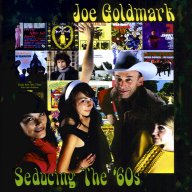Hello fellow players,
This week I’d like to cover a part of the steel guitar that gets much discussion, the legs. Some of the old console steel guitars were made without legs. These are brands like Epiphone, the earliest Fenders and almost all National, Magnatone and several other great professional steel guitars and the only thing that kept them from being great highly desirable guitars was the fact that they either had legs of a poor design, like the Gibson Console Grand or no legs at all.
In the last several years we have been manufacturing leg sockets that work with standard professional pedal guitar legs. These use a half inch thirteen thread. We also have legs that are much stiffer, will extend a little over 44 inches, are strong and beautiful. These also retract to fit in any steel guitar case. These are the only legs that I would ever care to see on a steel guitar.
Recently, these legs have been very hard to obtain and are getting very expensive. The original manufacturer was Atlas Microphone Company. I can remember when these mike stands sold brand new for only $6.90 each in 1955. Not only have the prices of these mike stands doubled several times, but are nearly unobtainable from Atlas. They will no longer sell them without the base.
All this and by the time we have the plugs made for the ends to screw into the socket, the price is pretty well prohibitive. So for years, a company in North Carolina has been making all the steel guitar lets and doing a very good job of it. However, OSHA has been on them pretty hard recently concerning the chrome work that is done to the finished product. This has made these legs more expensive and harder to obtain.
A friend named Jim Egan in Texas made these for awhile, but has now ceased production because of the cost involved. Many pedal steel guitar companies in the last couple of years have been running scared wondering what they were going to do to take care of this leg situation. Of course, as we all know, GFI manufactures their own thick wall aluminum legs which works fine. However some folks like steel legs that are chrome plated because they stay shiny easier and aren’t quite as flexible.
Adjustability for height is another reason the regular old steel guitar / mike stand legs are still desirable. As of the moment we are buying legs that are steel and chrome of the new design that look almost identical to the great standard old telescoping chrome leg. We have managed to hold the price of these legs to $49.90 each. These are for pedal steel guitars. They use a standard half inch thirteen thread.
These legs can be made to fit and be ordered for the GFI steel guitars, so if you any of you ever had a complaint about the GFI being a little flexible in the aluminum leg department, a set of these new steel legs will stiffen it up and should make you happy. Expect a small increase in weight of a couple pounds.
The knurled nut on these new legs is designed to be very strong and dependable, even though it looks very similar to the regular old Atlas design, it is actually much easier to get a grip on and the threads are much smoother, all of which makes the leg feel much higher quality.
As we all know, legs are a very important part of any steel guitar, pedal or non-pedal. Knowing that many of you have had problems obtaining good high quality legs for your steel guitar or for your lapsteel with leg sockets, this should take care of your most demanding requirements.
By way of request, Bob Wills road stories. Seeing a great old black and white movie on Turner Classic Movie channel last week, I was reminded of some of my travels with Ray Price and Bob Wills back in the fifties in the famous old 29 passenger Flxible busses that I mention so often.
It seems like we were always having trouble with the engines blowing in these beautiful buses. The body on these buses was fine even though they didn’t have air conditioning and the heaters never worked after the first year or two on the road. The buses had the most beautiful lines of any buses ever made, even in this day and time, these buses with their rounded front ends, molded in headlights, big curved windshield and the rounded back end with the big cooling scoop on top, they looked absolutely gorgeous and still look much better than the aluminum boxes that we call buses today.
The problem with these wonderful buses was the fact that they used car engines, most often the straight eight Buick of the day. The biggest problem was these engines could throw a rod farther than Babe Ruth could hit a home run and managed to do so even more often.
Whenever we had to be somewhere at a certain time, we’d make sure that we went through a town that had at least one Buick dealer and tried to play in towns where they had plenty of old Buick parts. The brakes on these buses were just about as bad as the internal components of the engines themselves.
There I was, a steel guitar player in a couple of the great country music bands of the day having to spend most of my road time keeping our bus running. Years later I remember moving to Nashville and getting to drive and ride in some of the new, more modern General Motors coaches of the day. Power steering once in awhile, good heaters and in some of these GMC coaches, the heat was even good. But we still admired the bands that got to ride in the Trailways Silver Eagles.
Then there was David Houston’s little Flxible 29 passenger bus and he had a Detroit 371 super-charged engine and this bus would absolutely fly. He told me one time that when he went out to buy a bus, he went down to a GMC dealer, bought the engine and as soon as it was delivered to the dealer, he just went out and bought a junky old bus to install it in.
This way he had a very good dependable fast bus that may not have had air conditioning or heat, but it was dependable and fast. He had that bus for a long time, but near the end of his career I think he went back to a van and trailer. I must add here that David Houston of “Almost Persuaded” fame, was one of the very nicest stars ever in country music and he sure knew how to get the boys to a job.
The musicians might have frostbite when they get there or be half dead of heat stroke, but they got there with a smile. But then why not? They were usually the first ones there. I miss seeing those old buses on the road today.
Check out our monthly specials at www.steelguitar.net/monthlyspecials.html and we’ll try to save you a lot of money.
The friend to all bar holders,
Bobbe Seymour
www.steelguitar.net
sales@steelguitar.net
www.youtube.com/bobbeseymour
www.myspace.com/bobbeseymour
Listen To Steel Guitar Music Streaming 24 Hours A Day!
Steel Guitar Nashville
123 Mid Town Court
Hendersonville, TN. 37075
(615) 822-5555
Open 9AM – 4PM Monday – Friday
Closed Saturday and Sunday


